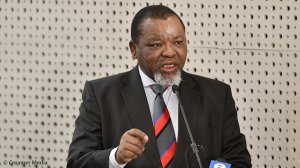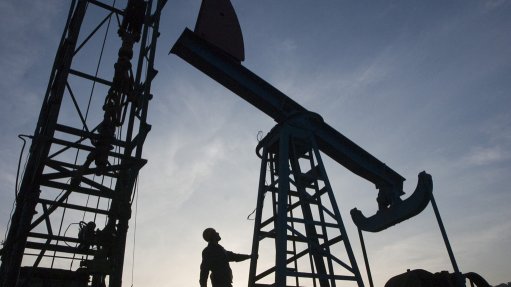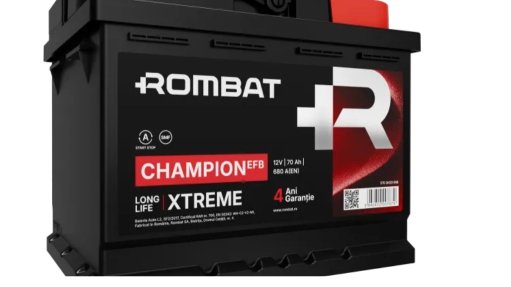South Africa to test market for emergency power ‘gap fillers’ as IRP is finalised

Mineral Resources and Energy Minister Gwede Mantashe on the Integrated Resource Plan 2019 allocations and the need for short-term supply solutions. Camera Work: Kutlwano Matlala. Editing: Nicholas Boyd. Recorded: 18.10.2019
South Africa will release a request for information (RFI) in the coming weeks to test the market for solutions to close an immediate electricity supply gap of between 2 000 MW and 3 000 MW, which has emerged primarily as a result of a fall in the energy availability factor (EAF) from Eskom’s coal fleet and a de-rating of the anticipated output from the much-delayed Medupi and Kusile plants.
The situation has been exacerbated further by the fact that no new capacity has been procured since 2014, as well as by a protracted hiatus, between 2015 and 2018, in the construction of renewables projects after Eskom refused to sign power purchase agreements.
The decline in EAF has increased the risk of load-shedding, which resumed this week, and Mineral Resources and Energy Minister Gwede Mantashe said on Friday that there was an urgent need for securing “additional capacity in order to increase our reserve margins”.
Speaking at a briefing held to unveil the Integrated Resource Plan 2019 (IRP2019), which was approved by Cabinet on Wednesday, Mantashe said the IRP recognised that, owing to “challenges with Eskom’s plant performance” a gap had arisen between supply and demand that needed to be addressed immediately.
The Department of Mineral Resources and Energy (DMRE), probably through the Independent Power Producer Office, would release an RFI in the coming weeks to assess the potential for supply- and demand-side “gap fillers” that can be deployed within months rather than years.
Depending on the responses received, the Minister may draft a determination under Section 34 of the Electricity Regulation Act to create the framework for an emergency procurement programme.
The IRP2019 is able to accommodate such procurement, owing to the fact that the plan has introduced an allocation for ‘other’ technologies, besides the specific allocations made for coal, nuclear, hydro, storage, solar photovoltaic, wind, concentrated solar power, gas and diesel.
The IRP2019 states that, between 2019 and 2023 allocations for other technologies, such as distributed generation, co-generation, biomass and landfill gas, will be made “to the extent of the short-term capacity and energy gap”.
Acting deputy director-general Thabang Audat told Engineering News Online that the RFI will be entirely technology agnostic and will be targeting short-term solutions that can be procured at tariffs below that of the diesel-fuelled open-cycle gas turbines.
He indicated that power barges could be one of the short-term solutions considered, but also stressed that the department would also be open to demand-side interventions.
The DMRE is also seeking legal advice on how to secure the concurrence of the National Energy Regulator of South Africa for the determination, as well as other future determinations.
IRP2019 ALLOCATIONS
The IRP2019 itself outlines what will be a further diversification of South Africa’s coal-heavy electricity supply industry to 2030.
It shows that, while coal will continue to play a significant role, most of the new generation will arise in the form of onshore wind and solar photovoltaic (PV), which have emerged as the cheapest generation technologies – a marked change from the IRP2010, when coal remained materially cheaper than renewables.
The plan caters for the addition of 1 500 MW of new coal by 2030, a 500 MW increase relative to the 1 000 MW allocation included in the draft IRP2018, which was released for public consultation in August last year.
Deputy director-general Jacob Mbele indicated that the inclusion of more new coal had arisen as a result of a constraint on gas introduced to the assumptions relative to those used in the draft plan. The approved plan has allocated 3 000 MW for gas, rather than the 11 930 MW outlined in the draft version.
The IRP2019 also sustained the draft’s yearly build limits for solar PV and wind at 1 000 MW and 1 600 MW respectively. Despite these constraints, the plan still allocated 6 000 MW to solar PV and 14 400 MW to wind.
While there are yearly allocation gaps for solar PV in 2024, 2026 and 2027, it is anticipated that solar PV’s deployment will be smoothed by the fact that the technology is likely to capture a large portion of the allocation for ‘other’ technologies.
The plan also included 2 500 MW for imported hydro and 2 088 MW of storage to cater for Eskom’s battery energy storage roll-out, which is being supported by the World Bank.
The only reference to nuclear for the period to 2030 relates to a planned life extension of Koeberg from 2024 to 2044. However, the IRP document also includes a decision to commence preparations for a nuclear build of 2 500 MW at a pace and scale that the country can afford.
Another important inclusion in the IRP2019 is the decommissioning schedule for Eskom’s aging coal fleet, starting from 2019.
“It must be noted that, while the coal’s installed capacity will be lower than current installed base, it will remain the dominant energy supply contributing 59% of the energy volumes required to meet demand. Nuclear will contribute 5%, hydro 8%, solar PV 6%; wind 18%, with gas and storage at 2%,” Mantashe concluded.
Article Enquiry
Email Article
Save Article
Feedback
To advertise email advertising@creamermedia.co.za or click here
Comments
Announcements
What's On
Subscribe to improve your user experience...
Option 1 (equivalent of R125 a month):
Receive a weekly copy of Creamer Media's Engineering News & Mining Weekly magazine
(print copy for those in South Africa and e-magazine for those outside of South Africa)
Receive daily email newsletters
Access to full search results
Access archive of magazine back copies
Access to Projects in Progress
Access to ONE Research Report of your choice in PDF format
Option 2 (equivalent of R375 a month):
All benefits from Option 1
PLUS
Access to Creamer Media's Research Channel Africa for ALL Research Reports, in PDF format, on various industrial and mining sectors
including Electricity; Water; Energy Transition; Hydrogen; Roads, Rail and Ports; Coal; Gold; Platinum; Battery Metals; etc.
Already a subscriber?
Forgotten your password?
Receive weekly copy of Creamer Media's Engineering News & Mining Weekly magazine (print copy for those in South Africa and e-magazine for those outside of South Africa)
➕
Recieve daily email newsletters
➕
Access to full search results
➕
Access archive of magazine back copies
➕
Access to Projects in Progress
➕
Access to ONE Research Report of your choice in PDF format
RESEARCH CHANNEL AFRICA
R4500 (equivalent of R375 a month)
SUBSCRIBEAll benefits from Option 1
➕
Access to Creamer Media's Research Channel Africa for ALL Research Reports on various industrial and mining sectors, in PDF format, including on:
Electricity
➕
Water
➕
Energy Transition
➕
Hydrogen
➕
Roads, Rail and Ports
➕
Coal
➕
Gold
➕
Platinum
➕
Battery Metals
➕
etc.
Receive all benefits from Option 1 or Option 2 delivered to numerous people at your company
➕
Multiple User names and Passwords for simultaneous log-ins
➕
Intranet integration access to all in your organisation

















